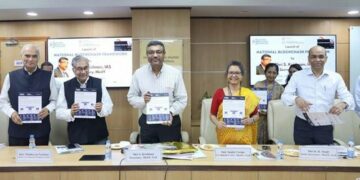– What are the benefits of using technology in coal power generation and how can they be maximized while minimizing risks?
Risky Business: The Dangers of Depending on Technology to Power ASEAN’s Coal Plants
In recent years, there has been a significant push towards using technology to power coal plants in ASEAN countries. While the use of technology can offer various benefits, there are also several dangers associated with relying on it to power these essential energy facilities. In this article, we will explore the potential risks and drawbacks of depending on technology to fuel coal plants in the ASEAN region.
The Risks of Relying on Technology for Coal Plants
When it comes to powering coal plants with technology, there are several potential risks that need to be taken into consideration. These risks include:
- Dependency on complex systems – Modern coal plants rely heavily on complex technological systems for their operation. Any malfunction or failure in these systems can lead to significant downtime and potential energy shortages.
- Cybersecurity threats - The increasing digitization of coal plants makes them vulnerable to cybersecurity threats. A cyber-attack can disrupt operations, leading to potential safety hazards and economic losses.
- Environmental impact - While technology has enabled coal plants to adopt cleaner and more efficient processes, there are still environmental concerns associated with coal power generation. These include air and water pollution, as well as greenhouse gas emissions.
- Resource depletion – The reliance on technology for coal power generation can lead to the depletion of natural resources such as coal and water, which are essential for plant operations.
Case Studies and Firsthand Experience
Several case studies and firsthand experiences highlight the potential dangers of depending on technology to power coal plants. In one instance, a coal plant in an ASEAN country experienced a prolonged shutdown due to a critical failure in its technological systems. This resulted in a significant loss of energy supply and financial impact on the region.
On a positive note, there are also success stories where advanced technology has enhanced the efficiency and environmental performance of coal plants. However, these cases emphasize the importance of carefully managing and mitigating the risks associated with technological dependency in coal power generation.
Benefits and Practical Tips
Despite the risks, there are several benefits to using technology in coal power generation. These include improved efficiency, reduced emissions, and enhanced operational monitoring. To ensure the safe and reliable operation of coal plants, it is crucial to implement practical tips such as:
- Investing in robust cybersecurity measures to protect against potential threats.
- Regular maintenance and monitoring of technological systems to prevent downtime and malfunctions.
- Continuous innovation and investment in sustainable technologies to minimize environmental impact.
Conclusion
While technology has undoubtedly transformed the way coal plants operate, it is essential to acknowledge and address the potential risks and dangers associated with this dependency. By carefully managing these risks and implementing practical measures, ASEAN countries can continue to harness the benefits of technology in powering their coal plants while ensuring the safety, sustainability, and reliability of their energy supply.
The latest report from the ASEAN Center for Energy (ACE) highlights the importance of addressing climate change without requiring immediate phase-out of coal plants in ASEAN countries. This approach reflects a strategic and realistic plan to achieve sustainable energy goals while also considering practical implications and challenges.
Reevaluating Coal Fleet Investment
Instead of completely dismantling coal-fired power plants, ASEAN countries can focus on upgrading and modernizing their existing fleet. This approach allows for a gradual transition towards cleaner energy sources, taking into account the current economic and social realities in the region. By investing in advanced technologies such as carbon capture and storage (CCS) or adopting more efficient combustion processes, countries can significantly reduce emissions from their coal plants.
Balancing Energy Security
Although renewable energy sources are essential for addressing climate change, it is also crucial to recognize the significance of ensuring energy security within the region. Given that coal remains a reliable and cost-effective fuel source for many ASEAN nations, a sudden phasing out could lead to potential disruptions in energy supply. By incorporating cleaner coal technologies alongside renewable energy expansion, ASEAN countries can strike a balance between environmental responsibility and meeting their growing energy demands.
Transitioning Towards Renewable Energy
While maintaining their existing coal fleet, ASEAN nations should prioritize diversifying their energy mix by increasing investments in renewables such as solar, wind, hydroelectric power, and geothermal resources. Embracing innovative solutions like grid-scale battery storage systems can further support integration of intermittent renewable sources into the existing power grid while enhancing flexibility and stability.
Promoting Sustainable Development Goals
Ultimately, transitioning towards sustainable energy requires a multi-sectoral approach that aligns with broader development objectives. By integrating environmental considerations into national development plans and policies, ASEAN countries can foster inclusive growth while promoting clean technology innovation. Furthermore, collaboration with international partners on research initiatives and capacity-building efforts can enhance regional cooperation towards achieving long-term sustainability aspirations.
Conclusion
it is imperative forASEANNATIONS TOculivatea comprehensive
approach totacklingclimatechange
bybalancingexistingcoal
fleetupgradeswithstrategic
investmentsinrenewableenergy.With carefulplanningandinclusivestakeholderengagement,
the regioncanmitigatetheimpacts
ofclimatchangeandpavea
pathforsustainabledevelopmentinthe years ahead.













